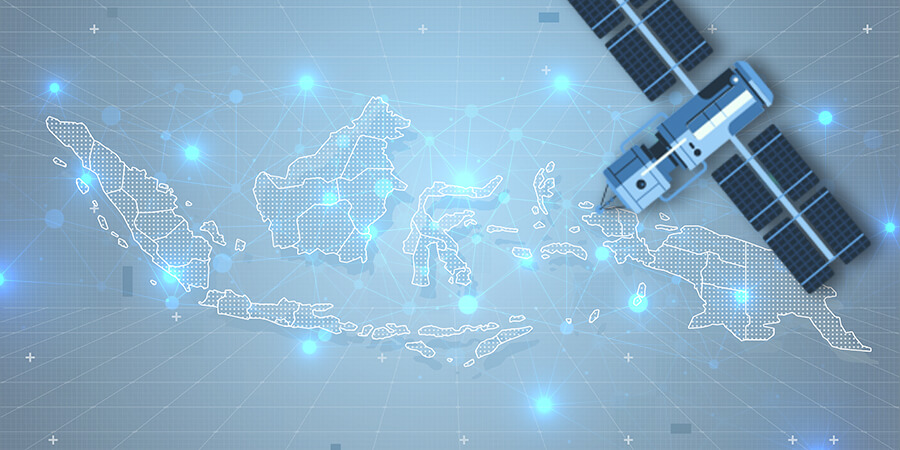The internet is undoubtedly one of the most exceptional innovations of the last half century, as it enables data sharing and communication regardless of location. However, despite the continuous development of technology, the digital divide remains a pressing issue. The term "digital divide" refers to the disparity between those individuals, businesses, demographics and regions that have unrestricted access to modern information and communications technology (ICT) and those that do not.
In 2019, Indonesia had around 94 million adults without mobile internet access, and fixed broadband internet was even scarcer. Nearly 80% of those who were unconnected resided in non-metropolitan rural areas of Sumatera, Java and Bali islands — among the country's most populous. Additionally, inadequate connectivity affected 60% to 70% of Indonesians in the eastern region due to the poor quality of service.
Despite having among the highest numbers of internet users worldwide, Indonesia’s internet penetration rate still ranks among the lowest in all of Asia. In 2022, this stood at just 69.8%.
As of January 2022, an estimated 73.7 million people in Indonesia, or 26.3% of the total population, reportedly did not use the internet. Furthermore, over 12,500 villages and 104,000 schools across the nation still lacked internet access.
To address this issue, Indonesia is actively seeking to enable more reliable connectivity for its people. One such solution is the launch of SATRIA-1, Indonesia's first state-owned satellite, designed to improve internet connectivity.
Indonesia's SATRIA-1 for Improved Connectivity
Recently, Indonesia collaborated with Elon Musk's SpaceX to launch the country's largest telecommunications satellite from the United States in a $540 million project. The initiative aims to connect remote corners of the archipelago to the internet.
Presently, almost two-thirds of Indonesia's 280 million population have access to the internet. However, connectivity remains limited, particularly on the underdeveloped eastern islands.
"Satellite technology will accelerate internet access to villages in areas that cannot be reached by fiber optics in the next 10 years," announced Senior Indonesian Minister Mahfud MD in a statement ahead of the launch. The project is a public-private partnership between the government and PT Satelit Nusantara Tiga, an Indonesian satellite service provider.
The 4.5-ton SATRIA-1, developed by Thales Alenia Space (TAS), was deployed into orbit from Florida by SpaceX's Falcon 9 rocket.
The satellite will occupy an orbital slot above Indonesia's eastern Papua region, with the primary objective of providing equal internet access for public facilities in 3T regions, including schools, hospitals, community health centers, village offices, sub-district offices and security services. According to the Indonesian government, the system has a throughput capacity of 150 gigabytes per second and will supply internet access to 50,000 public service points.
Mahfud MD expressed that this project represents a significant step towards advancing internet access in disadvantaged regions. The internet speed at each point of contact is projected to reach 4 Mbps, a substantial increase from the initial calculation of 1 Mbps in 2018, when the project was initiated.
"It was a great achievement and success, thanks to the support of all Indonesian people," noted Arief Tri Hardiyanto, the acting President Director of the Telecommunication and Information Accessibility Agency (BAKTI). He gave this assessment at the Kennedy Space Center, Cape Canaveral, Florida, after the launch of the first Indonesian state-owned internet satellite.
Upon achieving the requisite orbit, PT Pasifik Satelit Nusantara and Thales Alenia Space will conduct In-Orbit Testing of the satellite for three weeks to ensure the proper functioning of the satellite. The next operational phase, called the In-Orbit Acceptance Review (IOAR), is scheduled for the first week of December 2023.
The Ministry of Communication and Informatics (KOMINFO) will continue monitoring SATRIA's internet service quality, with the expectation that Indonesians will gradually start to utilize SATRIA-1’s internet capacity beginning in January 2024.





